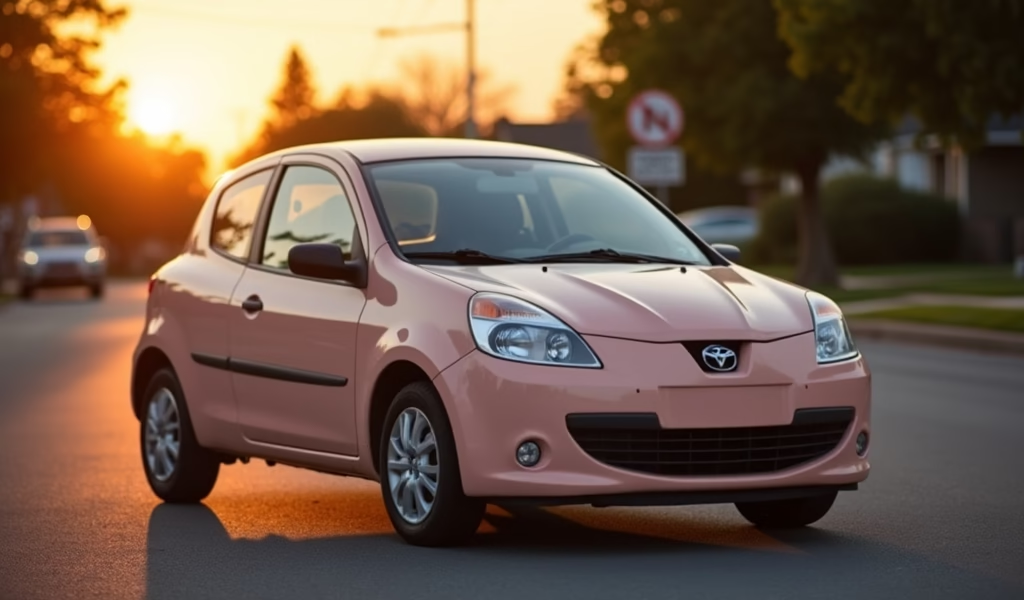Overview
This article provides strategies for new drivers to find affordable car insurance, highlighting the importance of comparing quotes, leveraging available discounts, choosing insurance-friendly vehicles, and developing good driving habits. It explains that while new drivers face higher premiums due to inexperience and statistical risk, they can gradually reduce costs through maintaining clean driving records, taking advantage of programs like good student discounts, and selecting vehicles with strong safety ratings rather than sports or luxury models.
Table of Contents
- Understanding Insurance Basics for New Drivers
- Factors Affecting Insurance Rates for Newcomers
- Finding Affordable Policies Without Sacrificing Coverage
- Discounts and Programs Available for New Drivers
- The Art of Comparing Insurance Quotes
- Best Cars for New Drivers with Cheaper Insurance
- Building Good Driving Habits to Reduce Premiums
- Conclusion: Navigating the Road to Affordable Coverage
- Frequently Asked Questions
Understanding Insurance Basics for New Drivers
Stepping behind the wheel for the first time brings excitement and newfound freedom, but it also comes with responsibility—including finding affordable car insurance. For new drivers, insurance premiums often come with sticker shock, sometimes reaching two to three times the rates of experienced drivers. This reality can be discouraging, but don’t worry—with the right knowledge, you can navigate these challenges.
Insurance companies base their rates on risk, and statistically, new drivers present a higher risk due to inexperience. According to the Insurance Institute for Highway Safety, drivers aged 16-19 are nearly three times more likely to be in a fatal crash than drivers 20 and older. This statistic isn’t meant to intimidate, but to explain why finding cheap car insurance for new drivers requires strategic planning.
Let’s start with the basics. Auto insurance typically includes several types of coverage: liability (for damage you cause to others), collision (for damage to your vehicle), comprehensive (for non-collision incidents like theft), personal injury protection, and uninsured/underinsured motorist coverage. While state requirements vary, most mandate at least basic liability coverage.
At Knows Your Car, we’ve guided countless new drivers through this process. The key to finding affordable coverage lies in understanding how insurers calculate risk and what factors you can control to lower your premiums. The good news? Despite being a new driver, you’re not doomed to pay sky-high rates forever.
Factors Affecting Insurance Rates for Newcomers
Several key factors influence insurance rates for new drivers, some within your control and others not. Age stands as perhaps the most significant factor—younger drivers typically pay more. A 16-year-old might pay double what a 25-year-old pays for identical coverage, simply due to statistical risk.
Your driving record, though blank as a new driver, will quickly become crucial. Every ticket, accident, or violation gets recorded and can impact your rates significantly. That first year behind the wheel deserves extra caution—establish good habits early to maintain a clean record.
Location plays a substantial role as well. Urban areas typically have higher rates due to increased traffic density, accident frequency, and theft rates. Rural drivers often enjoy lower premiums. The vehicle you choose affects rates dramatically too—sports cars and luxury vehicles cost more to insure than modest, safety-focused models.

Finding Affordable Policies Without Sacrificing Coverage
Finding affordable insurance doesn’t mean skimping on protection. Start by determining exactly what coverage you need rather than what might seem convenient. Most states require liability insurance, but minimum requirements might not provide adequate protection in a serious accident. Consider your assets and what you need to protect before selecting coverage limits.
For new drivers with modest vehicles, consider whether comprehensive and collision coverage make financial sense. If your car is worth less than $4,000, you might save by dropping these coverages and putting that money aside for potential repairs or replacement instead.
Deductibles represent another opportunity for savings. Raising your deductible from $500 to $1,000 could lower your premium by 15-30%. Just ensure you have enough savings to cover that deductible should you need to file a claim. According to the Insurance Information Institute, this single change can make a substantial difference in your premium costs.
Consider usage-based insurance programs that track your driving habits through a mobile app or device installed in your car. Safe drivers can earn discounts of up to 30% through these programs. Many car insurance options for new drivers now include these technology-based solutions.
Don’t overlook smaller regional insurers who might offer competitive rates for new drivers in specific areas. While major companies have name recognition, local insurers often provide personalized service and competitive rates for their communities.
Discounts and Programs Available for New Drivers
Insurance companies offer numerous discounts that new drivers can leverage to reduce their premiums. Good student discounts reward academic achievement, typically offering 5-25% off for maintaining a B average or better. This discount acknowledges the correlation between responsibility in academics and behind the wheel.
Driver education discounts provide another opportunity for savings. Completing an approved defensive driving course can reduce your premium by 5-15%. These courses teach accident prevention techniques and safe driving practices that benefit you both financially and safety-wise.
Many insurers offer distant student discounts if you’re a college student who leaves your car at home while attending school more than 100 miles away. This discount recognizes your reduced driving time and associated risk.
Technology-based savings programs continue to expand. Telematics devices monitor driving behaviors like speed, braking patterns, and time of day when driving. Safe drivers can earn substantial discounts through these programs, sometimes reaching 30% off standard rates.
Multi-policy discounts apply when you bundle auto insurance with other policies like renter’s insurance. Even new drivers can take advantage of these, often saving 5-25% across all policies. This approach not only saves money but also simplifies your insurance management.
Ask about low-mileage discounts if you drive less than the average person (typically under 7,500-10,000 miles annually). Reduced time on the road equals reduced risk in the eyes of insurers, potentially resulting in lower premiums for those who drive less frequently.
The Art of Comparing Insurance Quotes
Getting multiple quotes forms the cornerstone of finding affordable insurance. Rates can vary dramatically between companies for the exact same coverage, sometimes by hundreds or even thousands of dollars annually. Never settle for the first quote you receive.
When comparing quotes, ensure you’re evaluating identical coverage levels. Different liability limits, deductibles, or additional coverages can make direct comparison difficult. Create a simple spreadsheet to track quotes with matching coverage specifications.
Online comparison tools offer convenience, but they don’t always include every company. Supplement these tools by contacting insurers directly, especially regional companies that might offer competitive rates but don’t appear on comparison websites. This extra effort often yields better rates.
Remember that the lowest quote isn’t always the best value. Consider the company’s reputation for customer service and claims handling. J.D. Power’s customer satisfaction ratings can provide insight into how companies perform when you need them most—during the claims process.
Independent insurance agents represent multiple companies and can do much of this comparison work for you. They understand the market and can often find the best car insurance options for new drivers based on your specific circumstances. Their expertise comes at no additional cost, as they’re paid by the insurance companies they represent.

Best Cars for New Drivers with Cheaper Insurance
Your vehicle choice significantly impacts your insurance rates, especially as a new driver. Insurance companies calculate premiums partially based on the vehicle’s safety record, repair costs, and theft statistics. Some cars naturally cost less to insure than others.
Mid-sized sedans like the Honda Accord, Toyota Camry, and Mazda6 typically offer reasonable insurance rates due to their excellent safety features and moderate repair costs. These vehicles provide good protection while avoiding the premium costs associated with luxury brands or high-performance models.
Small SUVs like the Honda CR-V, Toyota RAV4, and Subaru Forester balance practicality with affordability when it comes to insurance. Their slightly elevated driving position provides better visibility for new drivers while maintaining reasonable insurance rates.
Avoid sports cars, luxury vehicles, and models with high theft rates as your first car. While tempting, these vehicles can double your insurance costs compared to more modest options. A Knows Your Car specialist recently helped a new driver save over $1,800 annually by switching from a sports coupe to a mid-sized sedan with better safety ratings.
Consider a vehicle’s safety ratings when making your selection. Cars with top safety picks from the Insurance Institute for Highway Safety often qualify for insurance discounts. Advanced safety features like automatic emergency braking, lane departure warning, and blind-spot monitoring can reduce both accident risk and insurance costs.
The sweet spot for many new drivers lies in choosing a 2-5 year old vehicle with modern safety features but without the steep depreciation of a brand-new car. This approach provides reliable transportation with good safety technology while keeping both purchase price and insurance costs reasonable.
Building Good Driving Habits to Reduce Premiums
Building a clean driving record represents your most powerful long-term strategy for reducing insurance costs. Every year of accident-free driving gradually lowers your risk profile with insurers. Patience pays dividends—after 3-5 years of safe driving, you’ll see significant premium reductions.
Avoid traffic violations, which impact your insurance for years. Even a single speeding ticket can increase your premium by 20-30%, with effects lasting 3-5 years. Traffic school sometimes offers an option to keep violations off your record, worth considering even with the time investment required.
Practice defensive driving techniques like maintaining safe following distances, anticipating other drivers’ actions, and staying focused on the road. These habits not only keep your record clean but also protect you and others from harm. The professionals at Knows Your Car emphasize these fundamentals with every new driver we advise.
Consider taking an advanced defensive driving course beyond what’s required for licensing. These courses teach emergency maneuvers and hazard recognition that can prevent accidents before they happen. Many insurers recognize these credentials with additional discounts.
Limit nighttime driving when possible, especially during your first year behind the wheel. Accident rates increase significantly after dark, particularly for inexperienced drivers. Gradually build comfort with night driving in low-traffic areas before tackling busy roads after sunset.
Maintain consistent insurance coverage without lapses, which can lead to higher rates when you reinstate coverage. Even a brief gap of a few days can result in being classified as a higher-risk driver, negating much of your good driving history.
Conclusion: Navigating the Road to Affordable Coverage
Finding cheap car insurance as a new driver presents challenges, but with strategic planning and informed decisions, you can secure reasonable rates that protect both your vehicle and financial future. Remember that insurance represents a long-term relationship—the habits and choices you make now will influence your rates for years to come.
Start with thorough research, comparing multiple quotes with identical coverage. Leverage every applicable discount, from good student offers to telematics programs that reward safe driving. Choose a vehicle that balances safety with affordability, avoiding the temptation of sports cars or luxury models that command premium insurance rates.
Most importantly, focus on building excellent driving habits from day one. Every safe mile contributes to your history as a responsible driver, gradually transforming you from a high-risk newcomer to a preferred customer with competitive rates.
At Knows Your Car, we’ve seen countless new drivers successfully navigate these early challenges to secure affordable coverage. The journey requires patience—insurance rates won’t drop overnight—but with consistent safe driving and strategic choices, you’ll see your premiums decrease substantially over time.
Remember that insurance exists to protect you financially, not just to satisfy legal requirements. Finding the right balance of coverage and cost ensures you’re protected when you need it most, while still keeping your budget intact for all the other expenses that come with vehicle ownership.
Frequently Asked Questions
How much does insurance typically cost for a brand-new driver?
New drivers typically pay between $1,500 and $3,000 annually for basic coverage, roughly double what experienced drivers pay. Rates vary significantly based on location, vehicle type, and individual factors.
Can I stay on my parents’ insurance policy to save money?
Yes, remaining on your parents’ policy often provides significant savings through multi-car discounts and their established driving history. This option typically works best if you live at the same address as your parents.
Do I need full coverage insurance as a new driver?
Full coverage isn’t legally required but is recommended if your vehicle is newer or financed. For older vehicles worth less than $4,000, liability-only coverage might make more financial sense.
How long does it take for insurance rates to go down for new drivers?
New drivers typically see their first significant rate reduction after maintaining a clean driving record for 1-2 years. Substantial decreases usually occur at the 3-year and 5-year clean driving milestones.
Which insurance companies offer the best rates for new drivers?
Companies like Progressive, State Farm, and GEICO often offer competitive rates for new drivers, particularly with student discounts. Regional insurers and farm bureaus sometimes provide even better rates in specific areas.

